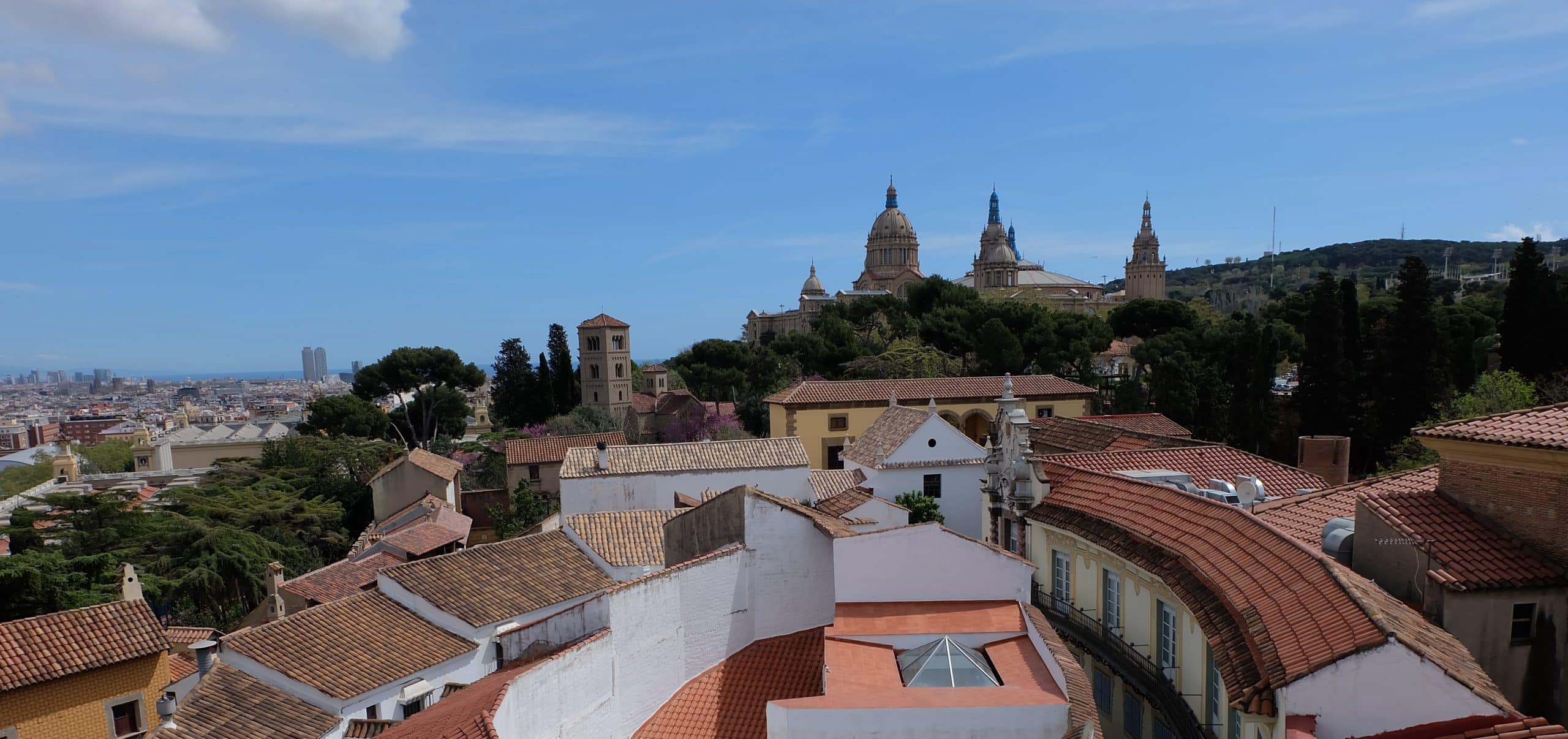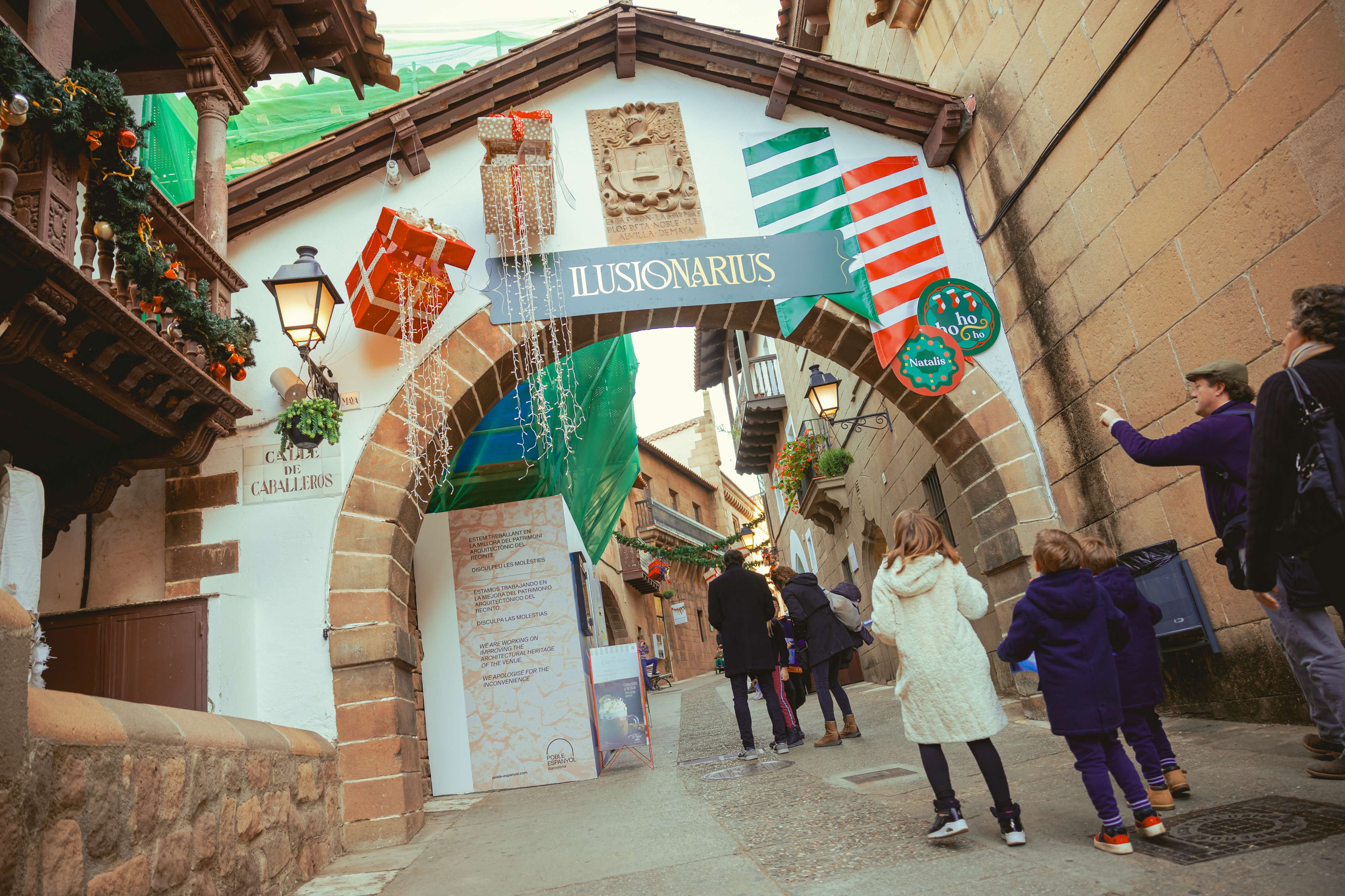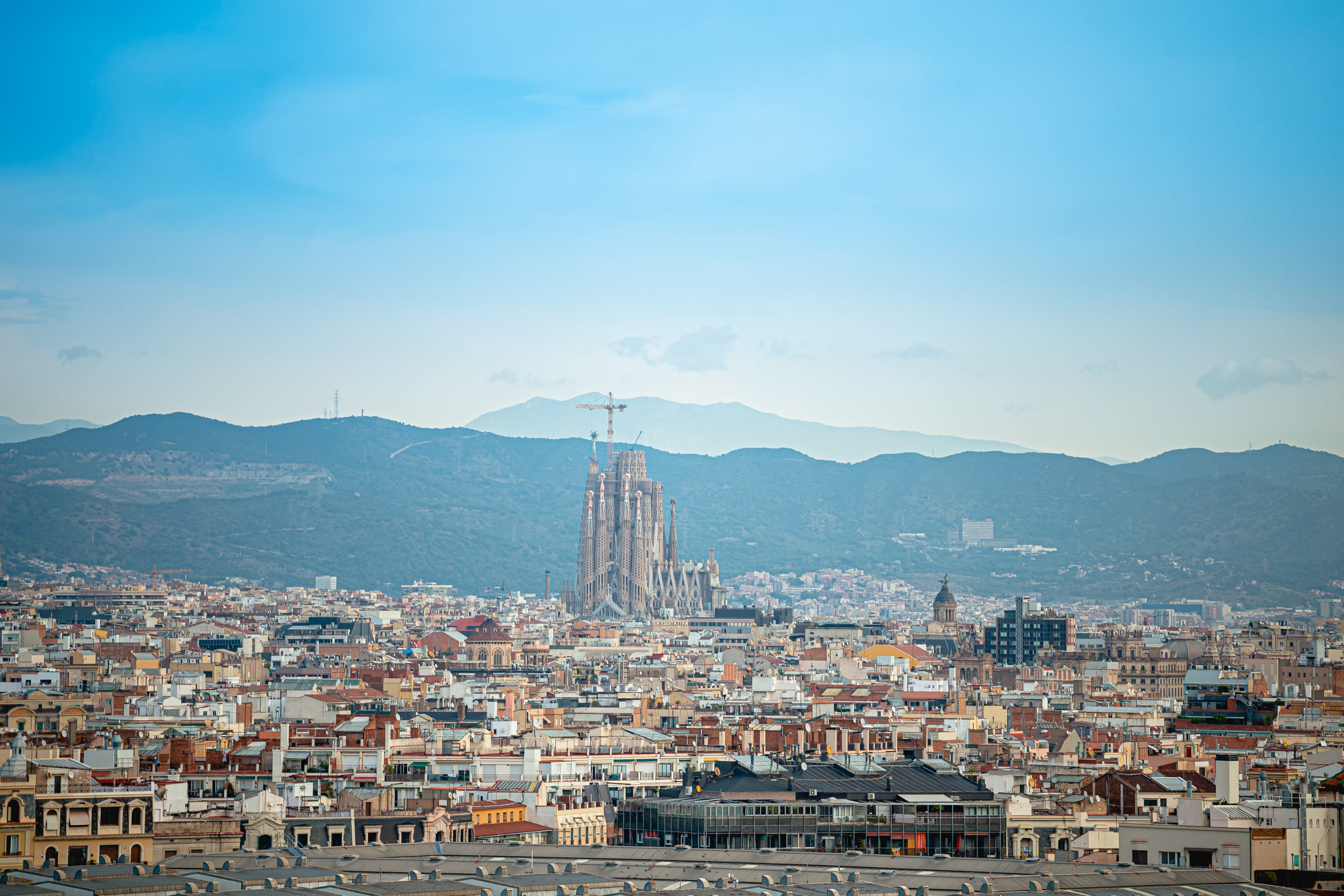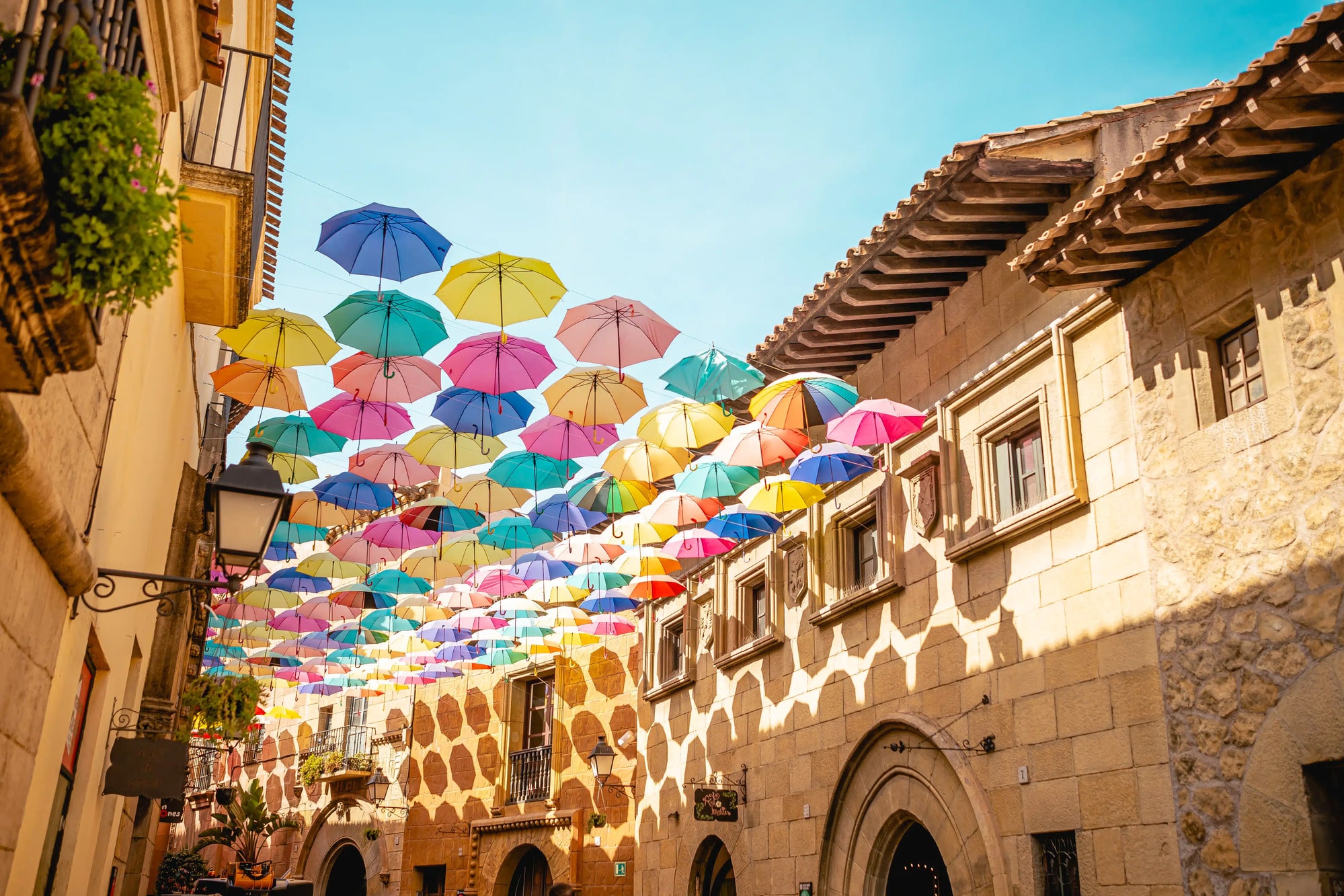What to visit in Montjuïc
COMPARTIR

Discover what to see in Montjuïc, a special place in Barcelona that blends history, art, culture, and nature. Enjoy panoramic views, immerse yourself in its rich history, and experience unique cultural experiences in this magical enclave.
What to visit in Montjuïc
If you’re planning a visit to Barcelona, Montjuïc is a must-see destination. This mountain, one of the city’s most famous, offers a unique combination of history, culture, and nature, with a wide variety of activities and places to visit.
From its imposing castle with stunning panoramic views of the city and harbor, to the charm of Poble Espanyol, filled with fascinating museums and monuments, Montjuïc has something for everyone.
En este artículo, te ofrecemos una guía completa sobre qué ver en Montjuïc, para que puedas disfrutar al máximo tu visita a este lugar impresionante y descubrir todo lo que tiene para ofrecer. ¡Toma nota!
Barcelona’s Montjuïc: history, culture, and nature in one place
Barcelona’s Montjuïc is a mountain that offers much more than panoramic views of the city. This place is a compendium of history, culture, and nature all in one. Witness to key events such as the 1929 World’s Fair and the 1992 Olympic Games, Montjuïc has undergone a significant transformation over the years, transforming from a site used for strategic and defensive purposes to a cultural and tourist center today.
In its Roman origins, the mountain had a watchtower on its summit that was used to report the arrival of ships to the city. In the 17th century, Montjuïc became a military fortress with the construction of a castle to defend the city from enemy attacks. In the 17th century, it became a military prison and would remain in use for this purpose until the end of the 19th century. Today, Montjuïc Castle is a Cultural Asset of National Interest.
At the 1929 International Exposition, Montjuïc played a leading role as the epicenter of the event, leaving a significant legacy, with the creation of iconic buildings and the modernization of the area. The Poble Espanyol is one of the most significant examples, along with the Mies van der Rohnm Pavilion, the Fira de Barcelona, and the National Palace.
En 1992, los Juegos Olímpicos representaron un gran cambio para la imagen de Montjuïc. La zona se convirtió en el epicentro de las competiciones y eventos deportivos, contando con lugares emblemáticos como el Palau Sant Jordi y el estadio Lluís Companys. Además, se llevaron a cabo importantes mejoras en la infraestructura, tales como la creación de nuevos espacios públicos, la revitalización de áreas verdes y la restauración y renovación de muchas instalaciones existentes.
Today, Montjuïc, with its numerous museums, gardens, and attractions, is a must-see for exploring Barcelona’s history and culture while enjoying its natural beauty. Get ready to explore everything it has to offer!
Visiting Montjuïc: the must-sees of the Barcelona mountain
Visiting Montjuïc is a unique experience in Barcelona. From the top of this mountain, you can admire breathtaking views of the city and the Mediterranean Sea and enjoy a wide variety of cultural, historical, and natural attractions.
Today we’re sharing with you the must-see places you can’t miss on your visit!
Poble Espanyol
The Poble Espanyol is one of the most notable attractions on Barcelona’s Montjuïc. Listed as a city Architectural Heritage Site, it’s a site with over 90 years of history that combines architecture, craftsmanship, and contemporary art with endless leisure and entertainment options for all ages.
Here are all the experiences awaiting you at Poble Espanyol:
Explore regional architecture: Wander the cobblestone streets and admire authentic replicas of buildings that represent the architecture of various regions of Spain. From charming Andalusian houses to a Catalan Romanesque monastery, the Poble Espanyol offers a unique insight into the country’s architectural diversity with 117 life-size buildings.
Visit the Fran Daurel Museum and other exhibitions: Located in Poble Espanyol, the Fran Daurel Museum impresses contemporary art lovers with more than 300 works by prominent Spanish artists such as Picasso, Miró, Dalí, Tàpies, and Chillida. And if you want to learn about the site’s origins, take advantage of your ticket to visit the exhibition “A Photographic Journey: The Construction of Poble Espanyol,” a window into the past that offers a unique look at how this iconic place came to life over time.
Discover all the exhibitions you can visit at Poble Espanyol. Access is included with admission!
Become an artisan for a day: Within the Poble, you can witness the work of skilled artisans in ceramics, glass, leather, and jewelry workshops. Observe the creative process in action, participate in workshops and courses for children and adults, and take home unique handmade products as a souvenir of your visit.
Taste Spanish cuisine: Immerse yourself in a variety of authentic Spanish cuisine at the numerous restaurants and bars located on the grounds. From classics like paella and tapas to regional specialties, each establishment offers a unique dining experience. Enjoy an unforgettable meal amidst this picturesque setting, adding a delicious touch to your visit to Poble Espanyol.
Enjoy cultural events: Poble Espanyol regularly hosts cultural and family events such as concerts, festivals, and themed activities. Check the program to make sure you don’t miss out on any experience!
Montjuïc Castle
This former military fortress, built in the 17th century, is another of the most popular places to visit in Montjuïc. From here, you can enjoy spectacular panoramic views of Barcelona and the Mediterranean Sea. You can also delve into the city’s military history as you walk along its walls and discover the fascinating collection of weapons and exhibits chronicling the numerous battles this castle has witnessed over the years.
Joan Miró Foundation
For contemporary art lovers, the Joan Miró Foundation is a must-see. This museum pays tribute to the famous Catalan painter Joan Miró and houses an impressive collection of his works, as well as temporary exhibitions of contemporary artists. The building’s architecture itself is a masterpiece that perfectly complements the artistic creations it houses. Immerse yourself in the surreal and colorful world of this 20th-century master.
National Palace and the Magic Fountain of Montjuïc
The majestic Palau Nacional is another highlight of Montjuïc, now home to the National Art Museum of Catalonia (MNAC). Discover the rich history of Catalan art from the Romanesque period to the present day. Also, don’t miss the light and water show of the Magic Fountain of Montjuïc, held in front of the Palau Nacional on weekend evenings. A visual and auditory experience that will leave you in awe.
German Pavilion by Mies van der Rohe
It is one of the most iconic structures on Montjuïc. It was designed by architect Ludwig Mies van der Rohe as the German national pavilion for the 1929 Barcelona International Exposition. Although originally built as a temporary structure, its innovative design and architectural significance led to its reconstruction on the same site in 1986.
Today, the Mies van der Rohe Pavilion hosts temporary exhibitions and events related to design and architecture.
CaixaForum
CaixaForum is a major cultural center in Barcelona, known for its impressive modernist architecture that combines elements of Gothic and Art Nouveau styles.
It hosts temporary art exhibitions ranging from ancient to contemporary, as well as offering a wide variety of cultural activities, such as concerts, lectures, and workshops for all ages.
The original CaixaForum building was the Casaramona textile factory, which was remodeled and converted into a cultural center by Catalan architect Josep Puig i Cadafalch.
The Olympic Ring
Montjuïc was the main stage of the 1992 Olympic Games, hosting many of the most important sporting competitions. Today, the Olympic Ring remains a symbol of sporting excellence and a must-see for sports fans.
Strolling through the Olympic Stadium and the Palau Sant Jordi, you can experience the excitement of the athletes who competed there and left their mark on the history of sport.
You’ll also be able to admire the majesty of the Calatrava Tower, an iconic architectural work that dominates the Montjuïc skyline. From its viewing platform, you can enjoy breathtaking views of the city and the sea.
Laribal Gardens
Montjuïc also offers the opportunity to connect with nature without leaving the city. The botanical gardens, along with extensive green spaces, walking trails, and spectacular views of the Mediterranean, make this an ideal stop for those seeking a natural retreat amidst the hustle and bustle of the city.
The Laribal Gardens are notable for their exquisite landscape design, which includes terraces, ponds, waterfalls, and an abundance of Mediterranean plants. The Cascade Fountain, with its majesty and beauty, is the true jewel of these gardens, providing a delightful space for visitors to relax and enjoy the surroundings.
Now that you know the best of Montjuïc, we recommend planning your visit in advance to make the most of your time and enjoy everything this place has to offer. Montjuïc is easily accessible by public transportation. You can take the metro and get off at the Paral·lel station (lines 2 and 3) and walk up the mountain. You can also consider taking the cable car to go directly to the top and enjoy stunning views of the city.
Additionally, we recommend purchasing tickets in advance to visit popular museums and attractions, such as the Poble Espanyol. This will save you time and avoid long lines.
Get ready for a unique experience discovering the historical richness and breathtaking landscapes of one of Barcelona’s most famous mountains!



